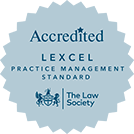
In this spotlight we focus on company articles of association and highlight matters covered in or related to articles that can give rise to problems or issues. It also highlights a recent case which has created some uncertainty for companies which have only one director and the relationship between articles of association and shareholders’ agreements.
BACKGROUND
The articles of association of a Company (together with the memorandum of association) form the constitution of a Company and set out rules for how the Company is to be operated. Key areas covered by the articles include matters relating to the directors and decision making, the share capital, issues and transfers of shares, dividends and shareholder meetings.
Following the coming into force of the Companies Act 2006, the default articles of association are the “Model Articles”. There are different forms of Model Articles for public companies and companies limited by guarantee, but the most common form is the Model Articles for private companies limited by shares.
Prior to the coming into force of the Companies Act 2006, the default articles under the Companies Act 1985 and before that the Companies Act 1948 were known as Table A (of which there are a number of different versions depending upon exactly when the company was incorporated).
A company is not required to adopt the Model Articles and may adopt entirely bespoke articles. The Model Articles can be, and often are, amended in whole or part when a new company is incorporated. This was also the case with the Table A articles of association.
Company law changed quite significantly in a number of respects with the coming into force of the 2006 Act with the result, in short, that while many of the provisions included in the constitution of a company incorporated under the earlier Companies Acts will continue to have the same effect as when the company was formed, some provisions may now have a different effect.
Points to note
Failure to observe provisions included in the articles of a company can have various unfortunate consequences including:
- breach of directors’ duties;
- the committing of a criminal offence;
- personal liability;
- a transaction being rendered void; and
- difficulties and additional costs arising in relation to a sale of the company if the mistake is identified in the course of the buyer’s due diligence exercise.
While all of the provisions included in the articles of association may be important and should be observed, the following are some of those most important or most likely to give rise to issues.
Quorum for directors’ meetings: In order for the directors to be able to make decisions in board meetings there needs to be a quorum of directors. Under the Companies Act 1985 companies were required to have a minimum of two directors and this was reflected in the quorum provisions in Table A articles.
Following the coming into force of the Companies Act 2006, it is permissible, and has become common for many smaller companies, to have only a sole director and the provisions regarding quorum which are included in the Model Articles have been widely interpreted as allowing for this. A recent High Court case involving a company with article provisions in a different, but arguably not materially different, form to the Model Articles, seems to be inconsistent with this interpretation in ruling that an article specifying, in terms, that the quorum for directors’ meetings could not be less than two should be taken as meaning that a company must have not less than two directors.
On the judge’s construction this over-ruled Model Article 7(2) which provides that: “If - (a) the company only has one director, and (b) no provision of the articles requires it to have more than one director, ...the director may take decisions without regard to any of the provisions of the articles relating to directors' decision-making."
The court’s construction has been a surprise to most corporate lawyers who have regarded Model Article 7(2) as prevailing and it also seems to be at odds with the changes made to the law to allow companies to have sole directors and the intended approach of the Model Articles, as explained by the Department of Industry Business and Skills guidance, “to think small first”.
In the writer’s view, the relevant provision is Model Article 7(2) and a quorum provision requiring two directors should not, at least in the case of the Model Article provision, be viewed as being inconsistent with or over-riding this provision. A sole director cannot by definition have a directors’ meeting with or by himself. A minimum quorum requirement of two reflects the simple fact that this is the minimum number of people required to have any meeting. Decisions made by a sole director are not reached in meetings but can be recorded formally, where required, as resolutions in writing.
It is to be hoped that the issue comes up again soon, perhaps before a higher court, which may take a different view or otherwise clarify the law. In the meantime, it may be worth bearing in mind that the articles of the company in question were not quite in the form of the Model Articles and had been specifically prepared to relate to circumstances where the company did have more than one director. Companies which are in a situation to be concerned by the decision could nevertheless consider amending their articles to cover future decision making and passing shareholder resolutions to ratify past decisions.
Directors’ interests: With limited exceptions, company law requires directors of a company to declare personal interests in proposed or existing transactions or arrangements with the company. Depending on the provisions which are included in the articles of association of the company, directors with personal interests in transactions or arrangements may or may not be allowed to vote and count in the quorum for directors’ meetings or may be allowed to do so in circumstances or subject to conditions set out in the articles.
Companies which were originally set up and sold as “shelf” companies do not have articles tailored or appropriate for all circumstances and what may be a sensible protection for a company where the shareholders and directors are different people can be an inappropriate obstacle for a company where the directors and shareholders are the same people.
For companies with a small number of directors, restrictive provisions can too often result in a situation where the directors are unable to form a quorum to vote on matters in which they are interested. The solution may be to pass a shareholder resolution addressing and appropriate to the form of the restriction, but if such situations are likely to reoccur, it may be worth considering if the articles should be changed to remove or modify the restrictions.
Share classes: The large majority of private companies have only a single class of ordinary shares, but there are a number of situations in which additional or other classes of shares are commonly created including private equity backed, joint venture or other split ownership companies. The classes will often be described as A or B etc. ordinary shares or may be preference shares having preferential rights to dividends and other distributions. The rights for different classes of shares should be set out in the articles of association so if thinking to create a new class of shares, new articles of association should generally be put in place.
Share issues: Where a company proposes to allot or issue new shares in the company, it is very important to check the provisions included in the articles of association. The relevant provisions may be bespoke provisions, provisions included under default Table A or Model Articles or, where the articles are silent, provisions included in the Companies Act 2006, or the position may be determined by a combination of these.
For companies registered under the 1985 or earlier Companies Acts, it will be necessary to check that the authorised share capital provision, which at the time of incorporation would have been included in the memorandum of association, but which following the coming into force of the 2006 Act is treated as forming part of the articles, has not been exceeded.
For all companies, it will be necessary to check that: there is authority to allot shares or no restrictions on such authority; the nature of the authority (which may be different for example where the company has or is to have more than one class of shares); and that the authority to allot shares has not expired.
It will also be necessary to consider and address pre-emption rights whereby the new shares to be issued must first be offered to the existing shareholders. Such rights may take the form of bespoke rights included in the articles or otherwise, unless expressly excluded by the articles, arise under the Companies Act 2006.
In short, the issue of new shares is potentially something of a minefield. It is very important to consider the Companies Act under which the company was incorporated and the effect of provisions included (or not included) in the articles.
Share transfers: As with issues of new shares, it is essential to consider the articles of association when shares are to be transferred. Default articles include provisions relating to directors’ rights to refuse to register transfers, which can be important because a transfer of shares must be registered in order for the transferee to be registered as a member of a company. Other than this, or in relation to transfers on death, neither the default articles nor Companies Acts provide much which is likely to be relevant to a proposed transfer of shares and any provisions regulating transfers are more likely to be included in bespoke articles of association where a range of provisions can be included
These might, for example, include: restrictions on transfers (other perhaps than permitted transfers); requirements for the shares to be offered to existing shareholders; circumstances in which shares must be offered for transfer; and provisions regarding the price at which shares must be offered dependent on the circumstances and whether the transferor is to be treated as a “good leaver” or “bad leaver”. Typically, good leavers will be offered market value for their shares whereas bad leavers may only get nominal value.
Relationship with Shareholders’ agreements
In addition to considering relevant provisions in the articles of association of a company, it is also important when contemplating a transaction relating to a company, to be clear if there is a shareholders’ agreement in place which includes any provisions having a bearing on the proposed transaction. Shareholders’ agreements commonly include restrictions whereby certain transactions may only be undertaken with the consent of all, or a specified majority of, the shareholders’ votes.
While the articles of association of a company are a public document available for inspection by anyone through the Companies House website, shareholders’ agreements are generally a private arrangement between the shareholders so it may not be evident if a shareholders’ agreement is in place.
There is some overlap as to whether certain provisions are included in articles or in a shareholders’ agreement or in both. Usually, the articles of association and any shareholders’ agreement are intended to work in tandem, but there may be conflicts between them.
While, in a legal sense, the articles should be given and carry more weight, a shareholders’ agreement will commonly provide that the shareholders are to treat the agreement as prevailing and, if necessary, amend the articles to reflect its provisions. Consequently, where there is a shareholders’ agreement in place, it is important to consider the effect of both documents.
This note is provided for the purpose of giving general information only. It is not intended to provide, and should not be relied upon as providing, legal advice. If legal advice is required, please contact a member of our corporate team.
 |
 |
 |
 |
 |
 |
|




